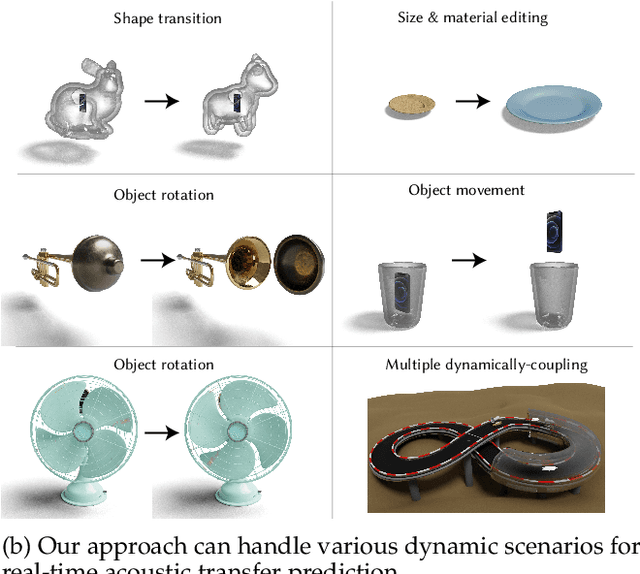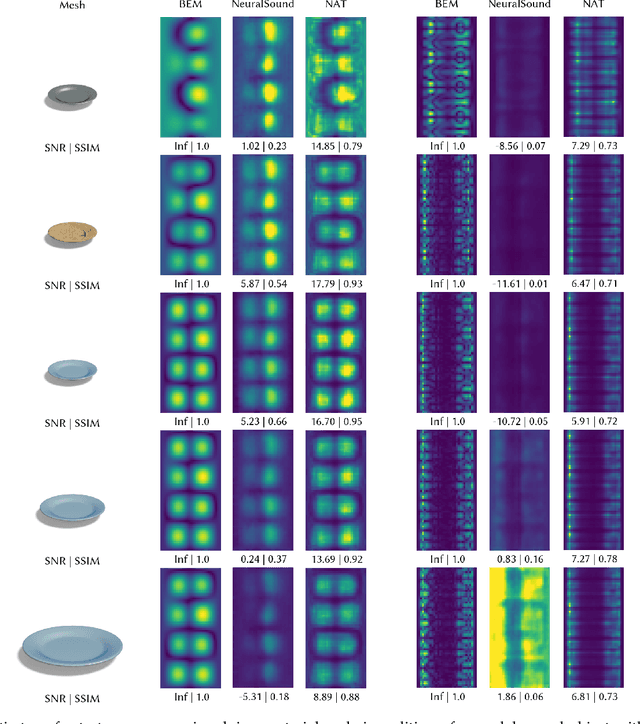Bo Pang
Kimi Linear: An Expressive, Efficient Attention Architecture
Oct 30, 2025Abstract:We introduce Kimi Linear, a hybrid linear attention architecture that, for the first time, outperforms full attention under fair comparisons across various scenarios -- including short-context, long-context, and reinforcement learning (RL) scaling regimes. At its core lies Kimi Delta Attention (KDA), an expressive linear attention module that extends Gated DeltaNet with a finer-grained gating mechanism, enabling more effective use of limited finite-state RNN memory. Our bespoke chunkwise algorithm achieves high hardware efficiency through a specialized variant of the Diagonal-Plus-Low-Rank (DPLR) transition matrices, which substantially reduces computation compared to the general DPLR formulation while remaining more consistent with the classical delta rule. We pretrain a Kimi Linear model with 3B activated parameters and 48B total parameters, based on a layerwise hybrid of KDA and Multi-Head Latent Attention (MLA). Our experiments show that with an identical training recipe, Kimi Linear outperforms full MLA with a sizeable margin across all evaluated tasks, while reducing KV cache usage by up to 75% and achieving up to 6 times decoding throughput for a 1M context. These results demonstrate that Kimi Linear can be a drop-in replacement for full attention architectures with superior performance and efficiency, including tasks with longer input and output lengths. To support further research, we open-source the KDA kernel and vLLM implementations, and release the pre-trained and instruction-tuned model checkpoints.
Reasoning Curriculum: Bootstrapping Broad LLM Reasoning from Math
Oct 30, 2025Abstract:Reinforcement learning (RL) can elicit strong reasoning in large language models (LLMs), yet most open efforts focus on math and code. We propose Reasoning Curriculum, a simple two-stage curriculum that first elicits reasoning skills in pretraining-aligned domains such as math, then adapts and refines these skills across other domains via joint RL. Stage 1 performs a brief cold start and then math-only RL with verifiable rewards to develop reasoning skills. Stage 2 runs joint RL on mixed-domain data to transfer and consolidate these skills. The curriculum is minimal and backbone-agnostic, requiring no specialized reward models beyond standard verifiability checks. Evaluated on Qwen3-4B and Llama-3.1-8B over a multi-domain suite, reasoning curriculum yields consistent gains. Ablations and a cognitive-skill analysis indicate that both stages are necessary and that math-first elicitation increases cognitive behaviors important for solving complex problems. Reasoning Curriculum provides a compact, easy-to-adopt recipe for general reasoning.
Neural Cone Radiosity for Interactive Global Illumination with Glossy Materials
Sep 09, 2025Abstract:Modeling of high-frequency outgoing radiance distributions has long been a key challenge in rendering, particularly for glossy material. Such distributions concentrate radiative energy within a narrow lobe and are highly sensitive to changes in view direction. However, existing neural radiosity methods, which primarily rely on positional feature encoding, exhibit notable limitations in capturing these high-frequency, strongly view-dependent radiance distributions. To address this, we propose a highly-efficient approach by reflectance-aware ray cone encoding based on the neural radiosity framework, named neural cone radiosity. The core idea is to employ a pre-filtered multi-resolution hash grid to accurately approximate the glossy BSDF lobe, embedding view-dependent reflectance characteristics directly into the encoding process through continuous spatial aggregation. Our design not only significantly improves the network's ability to model high-frequency reflection distributions but also effectively handles surfaces with a wide range of glossiness levels, from highly glossy to low-gloss finishes. Meanwhile, our method reduces the network's burden in fitting complex radiance distributions, allowing the overall architecture to remain compact and efficient. Comprehensive experimental results demonstrate that our method consistently produces high-quality, noise-free renderings in real time under various glossiness conditions, and delivers superior fidelity and realism compared to baseline approaches.
FEVO: Financial Knowledge Expansion and Reasoning Evolution for Large Language Models
Jul 09, 2025Abstract:Advancements in reasoning for large language models (LLMs) have lead to significant performance improvements for LLMs in various fields such as mathematics and programming. However, research applying these advances to the financial domain, where considerable domain-specific knowledge is necessary to complete tasks, remains limited. To address this gap, we introduce FEVO (Financial Evolution), a multi-stage enhancement framework developed to enhance LLM performance in the financial domain. FEVO systemically enhances LLM performance by using continued pre-training (CPT) to expand financial domain knowledge, supervised fine-tuning (SFT) to instill structured, elaborate reasoning patterns, and reinforcement learning (RL) to further integrate the expanded financial domain knowledge with the learned structured reasoning. To ensure effective and efficient training, we leverage frontier reasoning models and rule-based filtering to curate FEVO-Train, high-quality datasets specifically designed for the different post-training phases. Using our framework, we train the FEVO series of models - C32B, S32B, R32B - from Qwen2.5-32B and evaluate them on seven benchmarks to assess financial and general capabilities, with results showing that FEVO-R32B achieves state-of-the-art performance on five financial benchmarks against much larger models as well as specialist models. More significantly, FEVO-R32B demonstrates markedly better performance than FEVO-R32B-0 (trained from Qwen2.5-32B-Instruct using only RL), thus validating the effectiveness of financial domain knowledge expansion and structured, logical reasoning distillation
NAT: Neural Acoustic Transfer for Interactive Scenes in Real Time
Jun 06, 2025



Abstract:Previous acoustic transfer methods rely on extensive precomputation and storage of data to enable real-time interaction and auditory feedback. However, these methods struggle with complex scenes, especially when dynamic changes in object position, material, and size significantly alter sound effects. These continuous variations lead to fluctuating acoustic transfer distributions, making it challenging to represent with basic data structures and render efficiently in real time. To address this challenge, we present Neural Acoustic Transfer, a novel approach that utilizes an implicit neural representation to encode precomputed acoustic transfer and its variations, allowing for real-time prediction of sound fields under varying conditions. To efficiently generate the training data required for the neural acoustic field, we developed a fast Monte-Carlo-based boundary element method (BEM) approximation for general scenarios with smooth Neumann conditions. Additionally, we implemented a GPU-accelerated version of standard BEM for scenarios requiring higher precision. These methods provide the necessary training data, enabling our neural network to accurately model the sound radiation space. We demonstrate our method's numerical accuracy and runtime efficiency (within several milliseconds for 30s audio) through comprehensive validation and comparisons in diverse acoustic transfer scenarios. Our approach allows for efficient and accurate modeling of sound behavior in dynamically changing environments, which can benefit a wide range of interactive applications such as virtual reality, augmented reality, and advanced audio production.
Breaking the Cloak! Unveiling Chinese Cloaked Toxicity with Homophone Graph and Toxic Lexicon
May 28, 2025Abstract:Social media platforms have experienced a significant rise in toxic content, including abusive language and discriminatory remarks, presenting growing challenges for content moderation. Some users evade censorship by deliberately disguising toxic words through homophonic cloak, which necessitates the task of unveiling cloaked toxicity. Existing methods are mostly designed for English texts, while Chinese cloaked toxicity unveiling has not been solved yet. To tackle the issue, we propose C$^2$TU, a novel training-free and prompt-free method for Chinese cloaked toxic content unveiling. It first employs substring matching to identify candidate toxic words based on Chinese homo-graph and toxic lexicon. Then it filters those candidates that are non-toxic and corrects cloaks to be their corresponding toxicities. Specifically, we develop two model variants for filtering, which are based on BERT and LLMs, respectively. For LLMs, we address the auto-regressive limitation in computing word occurrence probability and utilize the full semantic contexts of a text sequence to reveal cloaked toxic words. Extensive experiments demonstrate that C$^2$TU can achieve superior performance on two Chinese toxic datasets. In particular, our method outperforms the best competitor by up to 71% on the F1 score and 35% on accuracy, respectively.
Temporal Consistency Constrained Transferable Adversarial Attacks with Background Mixup for Action Recognition
May 23, 2025Abstract:Action recognition models using deep learning are vulnerable to adversarial examples, which are transferable across other models trained on the same data modality. Existing transferable attack methods face two major challenges: 1) they heavily rely on the assumption that the decision boundaries of the surrogate (a.k.a., source) model and the target model are similar, which limits the adversarial transferability; and 2) their decision boundary difference makes the attack direction uncertain, which may result in the gradient oscillation, weakening the adversarial attack. This motivates us to propose a Background Mixup-induced Temporal Consistency (BMTC) attack method for action recognition. From the input transformation perspective, we design a model-agnostic background adversarial mixup module to reduce the surrogate-target model dependency. In particular, we randomly sample one video from each category and make its background frame, while selecting the background frame with the top attack ability for mixup with the clean frame by reinforcement learning. Moreover, to ensure an explicit attack direction, we leverage the background category as guidance for updating the gradient of adversarial example, and design a temporal gradient consistency loss, which strengthens the stability of the attack direction on subsequent frames. Empirical studies on two video datasets, i.e., UCF101 and Kinetics-400, and one image dataset, i.e., ImageNet, demonstrate that our method significantly boosts the transferability of adversarial examples across several action/image recognition models. Our code is available at https://github.com/mlvccn/BMTC_TransferAttackVid.
xGen-small Technical Report
May 10, 2025



Abstract:We introduce xGen-small, a family of 4B and 9B Transformer decoder models optimized for long-context applications. Our vertically integrated pipeline unites domain-balanced, frequency-aware data curation; multi-stage pre-training with quality annealing and length extension to 128k tokens; and targeted post-training via supervised fine-tuning, preference learning, and online reinforcement learning. xGen-small delivers strong performance across various tasks, especially in math and coding domains, while excelling at long context benchmarks.
A Minimalist Approach to LLM Reasoning: from Rejection Sampling to Reinforce
Apr 15, 2025



Abstract:Reinforcement learning (RL) has become a prevailing approach for fine-tuning large language models (LLMs) on complex reasoning tasks. Among recent methods, GRPO stands out for its empirical success in training models such as DeepSeek-R1, yet the sources of its effectiveness remain poorly understood. In this work, we revisit GRPO from a reinforce-like algorithm perspective and analyze its core components. Surprisingly, we find that a simple rejection sampling baseline, RAFT, which trains only on positively rewarded samples, yields competitive performance than GRPO and PPO. Our ablation studies reveal that GRPO's main advantage arises from discarding prompts with entirely incorrect responses, rather than from its reward normalization. Motivated by this insight, we propose Reinforce-Rej, a minimal extension of policy gradient that filters both entirely incorrect and entirely correct samples. Reinforce-Rej improves KL efficiency and stability, serving as a lightweight yet effective alternative to more complex RL algorithms. We advocate RAFT as a robust and interpretable baseline, and suggest that future advances should focus on more principled designs for incorporating negative samples, rather than relying on them indiscriminately. Our findings provide guidance for future work in reward-based LLM post-training.
CLOVER: A Test Case Generation Benchmark with Coverage, Long-Context, and Verification
Feb 12, 2025Abstract:Software testing is a critical aspect of software development, yet generating test cases remains a routine task for engineers. This paper presents a benchmark, CLOVER, to evaluate models' capabilities in generating and completing test cases under specific conditions. Spanning from simple assertion completions to writing test cases that cover specific code blocks across multiple files, these tasks are based on 12 python repositories, analyzing 845 problems with context lengths ranging from 4k to 128k tokens. Utilizing code testing frameworks, we propose a method to construct retrieval contexts using coverage information. While models exhibit comparable performance with short contexts, notable differences emerge with 16k contexts. Notably, models like GPT-4o and Claude 3.5 can effectively leverage relevant snippets; however, all models score below 35\% on the complex Task III, even with the oracle context provided, underscoring the benchmark's significance and the potential for model improvement. The benchmark is containerized for code execution across tasks, and we will release the code, data, and construction methodologies.
 Add to Chrome
Add to Chrome Add to Firefox
Add to Firefox Add to Edge
Add to Edge